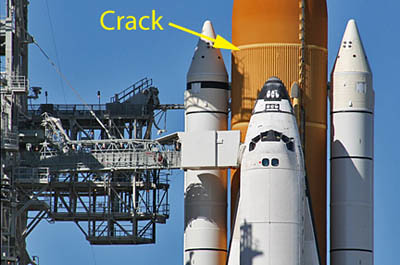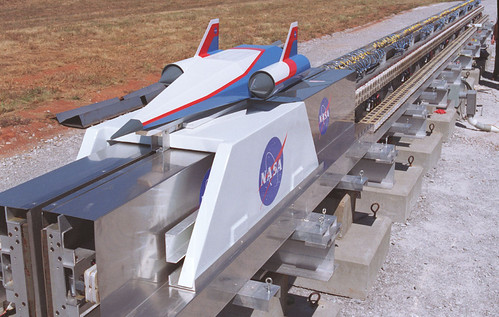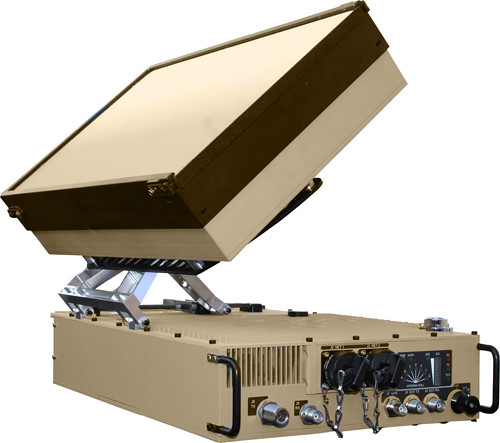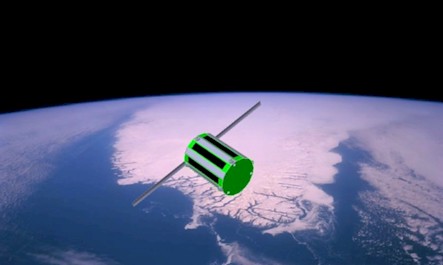The Lockheed-built Advanced Extremely High Frequency military communications satellite is successfully launched aboard an Atlas V rocket from Cape Canaveral.
[Trading Markets – 08/14/2010]
U.S. Army is under pressure to bring the same kind of high bandwidth networking (from 46 Mbps to about 10 Gbps) now available within its U.S. Central Command networks to its smallest units on the battlefield.
[National Defense Magazine – September 2010]
Market seen for personal tracking devices using satellites, such as the matchbook-sized transceiver and half-dollar size antenna that can be incorporated in personal devices, developed by Iridium.
[National Defense Magazine – September 2010]
Optimization of satellite networks using WAN compression and acceleration algorithms lets Expand Networks upgrade its clients remote site networking capabilities without requiring additional expensive satellite bandwidth.
[TMCnet – 08/13/2010]
NASA’s TERRA satellite portrays extent of Pakistan flooding that has caused the death of more than 1,600 people and has affected over 14 million in some way.
[Satnews – 08/12/2010]
While satellite TV companies DirecTV and Dish Network like to compare themselves to cable companies in a favorable light, customer complaints lead Better Business Bureaus to give low ratings.
[msnbc – 08/12/2010]
Thuraya launches its first satellite aeronautical service, AviationComms, already aboard over 200 helicopters and business jets.
[Bernama – 08/12/2010]
Swedish Space Corp satellites Mango and Tango, launche June 14th as part of the PRISMA project to test formation and rendezvous technology in space, are successfully separated from one another.
[SatNews – 08/11/2010]
Comtech receives $1.8M order for satellite modems from U.S. government.
[Trading Markets – 08/11/2010]
NASA’s WISE wide-field Infrared Survey Explorer satellite loses one detector as outer coolant tank empties; other detectors supported by inner tank continue to perform well.
[SatNews – 08/11/2010]
MTN Satellite Communications is selected by Beluga Shipping to install broadband VSAT system on the Beluga Shanghai, one of its new P-class series of super heavy-lift vessels.
[SatNews – 08/11/2010]
SES WORLD SKIES gets long-term renewal from iN DEMAND for capacity on AMC-1 and AMC-10.
[SatNews – 08/11/2010]
United Arab Emirates Telecommunications Regulatory Authority awards satellite licenses to Al Yah Advanced Satellite Comunications Services and Star Satellite Communications Company.
[TeleGeography – 08/11/2010]
NASA’s firs microsatellite, FASTSAT, arrives at Kodiak Launch Complex in Alaska for final checkout before launch.
[SatNews – 08/11/2010]
Iridium reports strong growth in second quarter 2010.
[Satellite Spotlight – 08/11/2010]
Newtec receives multi-million dollar award from U.S. government prime contractor for FlexACM technology for IP trunking satellite links.
[SatNews – 08/10/2010]
SEAKR to provide communications processor for the Iridium NEXT satellite constellation.
[PR Newswire – 08/10/2010]
Intelsat S.A. signs multi-year agreement with Sony Pictures Television for capacity on Intelsat 17, enhancing Intelsat’s media neighborhoods in the Indian Ocean region.
[SatNews – 08/10/2010]
Satellite data communications company Orgcomm agrees to sell assets of Stellar Satellite Communications to M2M based satellite and terrestrial communications manufacturer Quake Global.
[CBR Telecoms Communications – 08/10/2010]
China launches remote sensing satellite, YaoGan Weixing-10, aboard a CZ-4C Chang Zheng-4C (Long March) vehicle, for sixth launch this year in what is expected to be a launch surge for second half of 2010.
[SatNews – 08/10/2010]
Caprock announces new VSAT service for North American energy market.
[Market Watch – 08/10/2010]
Champion Technology Services deploys Encore’s BANDIT line of IP+Legacy industrially hardened routers for satellite VPN solutions throughout Southwestern U.S.
[SatNews – 08/10/2010]
Students from Colorado Space Grant Consortium team with Lockheed Martin to develop miniature satellite ALL-STAR (for Agile Low-Cost Laboratory for Space Technology Acceleration and Research).
[SatNews – 08/10/2010]
SatMAX delivers satellite repeater system to Science Applications International Corporation.
[Market Watch – 08/09/2010]
Dish Network stock price drops as investors learn of loss of subscribers for second quarter in a row.
[The Street – 08/09/2010]
Inmarsat to invest $2.1B in Boeing-built next-generation Ka-band satellites.
[Trading Markets – 08/09/2010]
NSR report details dizzying activity in the last 12 months in the mobile satellite services (MSS) sector, with companies going public, hedge funds increasing their positions in the industry, satellites being launched, and new products being developed and put into service.
[NSR – August 2010]
WBMSAT PS satellite communications consulting services










